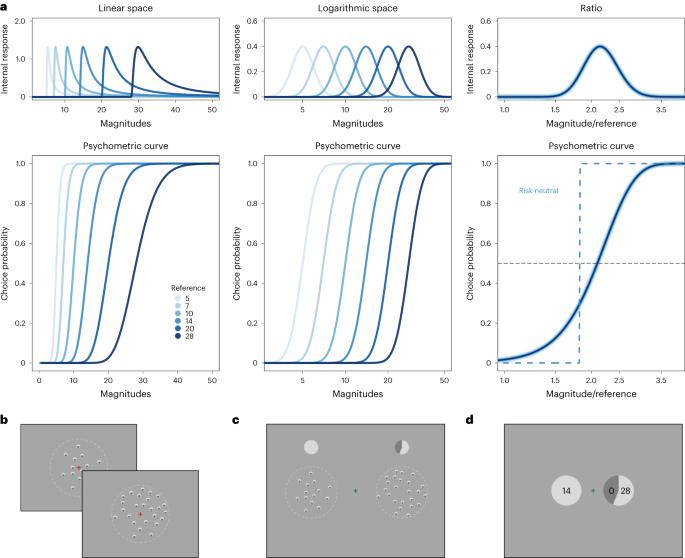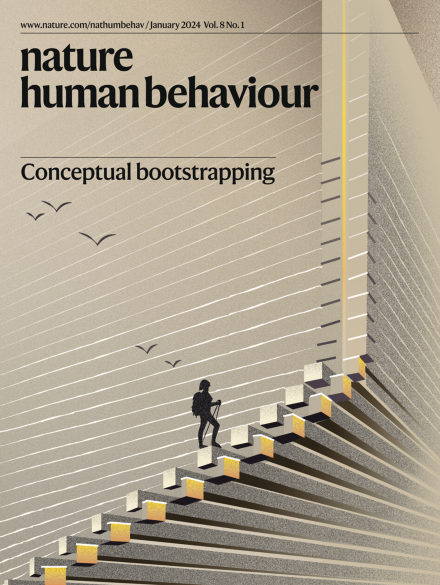个体的风险态度源于神经认知量表中的噪音。
IF 21.4
1区 心理学
Q1 MULTIDISCIPLINARY SCIENCES
引用次数: 2
摘要
人类通常厌恶风险,更喜欢较小的确定结果,而不是较大的不确定结果。经济学理论通常通过假设凹效用函数来解释这一点。在这里,我们提供的证据表明,风险厌恶也可能源于对更大货币收益的相对低估,这是一种植根于数字幅度的噪声对数编码的感知偏差。我们通过心理物理学和功能磁共振成像证实了这一点,方法是在幅度感知任务中测量幅度表征的行为和神经敏锐度,并将这些测量与单独的风险财务决策中的风险态度联系起来。计算模型表明,参与者在两项任务中使用相似的心理量值表示,在感知和风险选择中具有相关的精度。顶叶皮层具有更精确幅度表征的参与者表现出更少的可变行为和更少的风险厌恶。我们的研究结果强调,至少经济行为的一些个体特征可以反映感知处理的能力限制,而不是为货币结果分配主观价值的过程。本文章由计算机程序翻译,如有差异,请以英文原文为准。

Individual risk attitudes arise from noise in neurocognitive magnitude representations
Humans are generally risk averse, preferring smaller certain over larger uncertain outcomes. Economic theories usually explain this by assuming concave utility functions. Here, we provide evidence that risk aversion can also arise from relative underestimation of larger monetary payoffs, a perceptual bias rooted in the noisy logarithmic coding of numerical magnitudes. We confirmed this with psychophysics and functional magnetic resonance imaging, by measuring behavioural and neural acuity of magnitude representations during a magnitude perception task and relating these measures to risk attitudes during separate risky financial decisions. Computational modelling indicated that participants use similar mental magnitude representations in both tasks, with correlated precision across perceptual and risky choices. Participants with more precise magnitude representations in parietal cortex showed less variable behaviour and less risk aversion. Our results highlight that at least some individual characteristics of economic behaviour can reflect capacity limitations in perceptual processing rather than processes that assign subjective values to monetary outcomes. Using modelling and experimental data, the authors provide evidence that risk aversion may arise from relative underestimation of larger monetary payoffs, a perceptual bias rooted in the noisy logarithmic coding of numerical magnitudes.
求助全文
通过发布文献求助,成功后即可免费获取论文全文。
去求助
来源期刊

Nature Human Behaviour
Psychology-Social Psychology
CiteScore
36.80
自引率
1.00%
发文量
227
期刊介绍:
Nature Human Behaviour is a journal that focuses on publishing research of outstanding significance into any aspect of human behavior.The research can cover various areas such as psychological, biological, and social bases of human behavior.It also includes the study of origins, development, and disorders related to human behavior.The primary aim of the journal is to increase the visibility of research in the field and enhance its societal reach and impact.
 求助内容:
求助内容: 应助结果提醒方式:
应助结果提醒方式:


